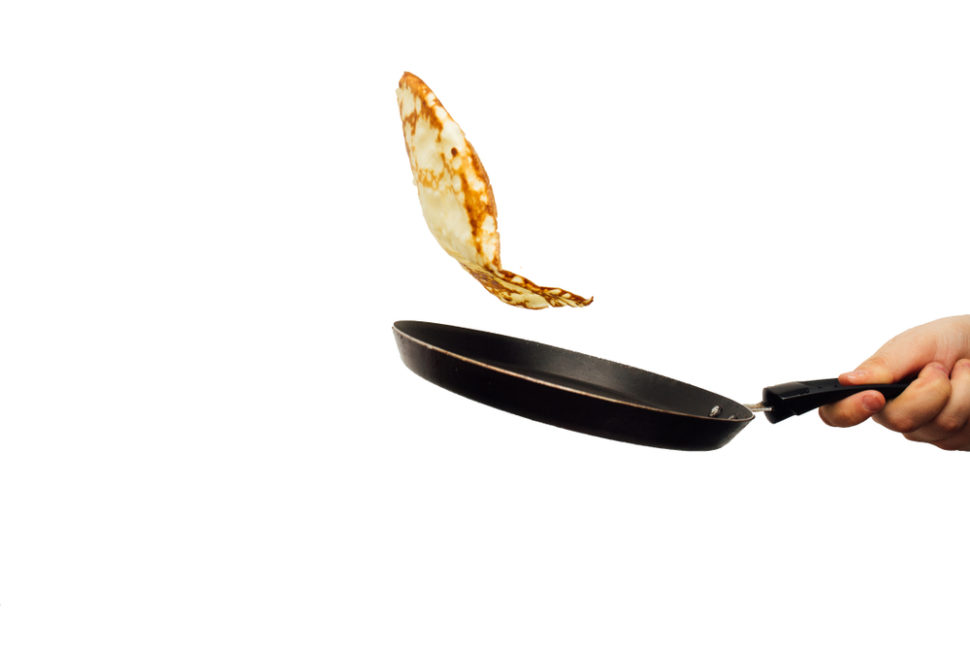Looking like paper-thin pancakes, the perfect crepes, or crêpes as the French would like us to write, are trickier to make.
Most crepe cookers would say that the perfect crepe is round and flat, with no lumps or holes, so that it cooks evenly all over. The key to achieving this, as most home chefs would agree, lies in the way you twirl and tilt the pan to handle the batter.
Now, a simulation-based study is backing up claims that the right pan tilting and twirling provides the best technique to make the ideal crêpe.
Using Fluid Physics to Make the Perfect Crepes
Cooking is part science and part art, and physicists can take some of the guessings out of the equation.
Previously, a neural network developed at MIT trained to cook up the perfect pizza by looking at photos.
Now, it’s the turn of crepe-making to get some science-based optimization.
Two fluid dynamics physicists, Edouard Boujo at the École Polytechnique in Palaiseau, France, and Mathieu Sellier at the University of Canterbury in New Zealand have joined efforts to find the optimal way to make perfect crepes.
Sellier, who’s also a chief brunch maker in his home, has always found it frustrating pouring batter and frying a uniformly flat crêpe.
His wife never forgets to point out that as a physicist — and one who’s specializing in fluid dynamics — he should know how to coat the pan evenly with crepe batter.
Touché!
So in 2016, Sellier told Boujo about his crepe predicament and the two scientists paired up to get to the mathematical bottom of the thing. They devised a math formula taking into account the motion of fluids in a moving container (pan) using computer simulations.
According to the pair, here’s how you should cook your crepes:
The best technique is:
“Pouring the right amount of batter onto a hot frying pan and then tilting the pan quite steeply, forcing the batter to run downhill all the way to edge of the pan. Next, the pan should be rotated in a way that forces the batter to spread to other parts of the pan — until it is completely covered. The angle of the pan should be gradually reduced during the final step until the pan lies flat on the stove.”
Much to the delight of their daughters, the researchers report an 83% improvement in the uniformity of crepes.
Outside the kitchen, this simulation aimed at optimizing the crepe-making process. It could also be useful for other liquid applications that require uniformly layered, thin liquid films such as smartphone displays.
The study is published in Physical Review Fluids.



















Comments (0)
Least Recent